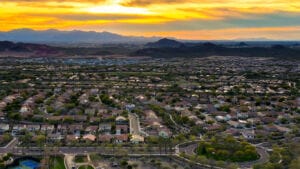Tiny houses continue to gain popularity in 2025, offering a practical and minimalist approach to homeownership that appeals to everyone from retirees to first-time buyers and off-grid adventurers. But while tiny homes are smaller in scale, the cost to build one still involves careful planning, budgeting, and design choices.
Whether you’re considering a DIY build, a prefab kit, or a custom tiny house, this guide breaks down everything you need to know about costs—from materials and labor to roofing, kitchen installation, and hidden expenses.
Average Tiny House Costs in 2025
Total Cost Ranges by Build Type
Building a tiny house can range widely in cost depending on your approach:
- DIY builds: $30,000–$45,000
- Prefab kits: $15,000–$80,000+
- Custom builds: $80,000–$150,000+
A fully finished, move-in-ready tiny home typically lands between $50,000 and $100,000. This includes structure, systems, and interior finishes. Going the DIY route can save money, but you’ll need tools, time, and construction skills.
Per-Square-Foot Comparison
Tiny homes often cost more per square foot than traditional homes—usually between $150 and $450 per sq ft. That’s because compact spaces require more custom work and multifunctional elements. However, overall costs are lower due to the reduced footprint.
Full Cost Breakdown: What Goes Into a Tiny House Budget
Land Acquisition & Preparation
If you don’t already own land, plan to spend $5,000–$50,000 or more, depending on your location. Urban lots cost more, while rural areas may require added utility access. Don’t forget to budget for:
- Permits and zoning research
- Grading, clearing, and prepping the site
- Septic systems or composting toilet options
- Power and water hookups ($10,000–$25,000)
Foundation or Trailer Base
Most tiny homes are built on trailers or permanent foundations. Costs vary:
- Trailer base: $4,000–$8,000
- Concrete slab or pier foundation: $5,000–$12,000
Your choice depends on whether the home will be stationary or mobile.
Permits & Legal Fees
Permit costs depend on your municipality. For most builds, expect to pay $500–$3,000. This includes building permits, inspections, and sometimes environmental or utility permits.
Construction Materials & Labor
Structural Shell
- Framing, walls, and insulation: $10,000–$25,000
- Windows and doors: $3,000–$7,000
Quality insulation is essential to keep energy costs down in a smaller space.
Roofing Considerations
Roofs on tiny houses must be weather-resistant and properly installed—especially if your home is on wheels or in a variable climate. A compact structure doesn’t mean cutting corners on durability.
Selecting a long-lasting, weather-resistant roof is essential for any tiny home—especially in variable climates. Cobex Construction Group provides expert roofing services that ensure small homes are well-protected without sacrificing design or efficiency.
Plumbing, Electrical & HVAC
Installation costs vary based on hookup needs and whether you’re off-grid or connected to utilities:
- Electrical and plumbing: $8,000–$15,000
- HVAC or mini-split system: $2,000–$5,000
If you’re installing solar or alternative energy systems, factor in another $10,000–$25,000.
Interior Finishes and Customization
Kitchen Costs in Small Spaces
Tiny house kitchens can range from ultra-basic to fully custom. Expect to spend $3,000–$15,000 depending on appliances, cabinetry, and layout.
Maximizing function in a tiny kitchen starts with clever cabinetry. kitchensearch.com offers compact kitchen solutions and custom cabinet options that help tiny home builders make every inch count.
Flooring, Walls & Fixtures
- Flooring (LVP, tile, or engineered wood): $1,500–$4,000
- Lighting, sinks, and wall finishes: $2,000–$6,000
Finishes tend to cost more per square foot since everything needs to be both space-efficient and durable.
Furniture & Built-Ins
Multipurpose furniture is a must. Custom storage stairs, fold-down beds, and built-in seating areas can add $2,000–$10,000 or more depending on complexity and materials.
Prefab Kits vs. Custom Builds
Prefab Kits: Pros & Cons
- Pros: Fast install, more affordable, fewer permitting headaches
- Cons: Limited design flexibility, may require assembly help
Many prefab kits come partially finished or require interior build-out.
Custom Builds: Pros & Cons
- Pros: Full design control, tailored to specific needs
- Cons: More expensive, longer timeline, requires project management
Great for unique locations or homeowners with specific lifestyle goals.
Hidden Costs to Watch Out For
Delivery & Site Access
If you’re buying a prefab or shipping a finished unit, delivery can add $1,000–$8,000 depending on location, terrain, and access.
Insurance & Long-Term Maintenance
Tiny houses built on foundations can often be covered under standard homeowner insurance. Mobile units may require RV insurance or a specialized policy.
How to Save Without Sacrificing Quality
Reuse Materials Where You Can
Reclaimed wood, vintage doors, salvaged fixtures, and secondhand appliances can save money while adding character.
DIY When It’s Safe
Skilled DIYers can handle framing, flooring, and basic finishes. Leave critical work—like electrical, roofing, and structural framing—to professionals to avoid costly mistakes later.
Conclusion: Build Smart, Live Small
The cost to build a tiny house in 2025 ranges from $30,000 to over $150,000, depending on your location, method, and design preferences. While tiny homes offer big lifestyle and financial benefits, building one still requires careful budgeting and thoughtful planning.
By understanding where your money goes—and working with trusted professionals for roofing, cabinetry, and construction—you can create a small space that’s built to last and perfectly suited to your life.




